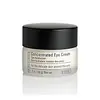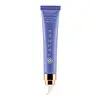What's inside
What's inside
 Key Ingredients
Key Ingredients

 Benefits
Benefits

 Concerns
Concerns

 Ingredients Side-by-side
Ingredients Side-by-side

Water
Skin ConditioningButylene Glycol
HumectantCaprylic/Capric Triglyceride
MaskingOlea Europaea Fruit Oil
MaskingStearic Acid
CleansingHydrogenated Palm Oil
EmollientSqualane
EmollientGlycerin
HumectantPentylene Glycol
Skin ConditioningPolysorbate 60
EmulsifyingLeuconostoc/Radish Root Ferment Filtrate
AntimicrobialCetyl Alcohol
EmollientSorbitan Stearate
EmulsifyingAlcohol
AntimicrobialPhenoxyethanol
PreservativePotassium Hydroxide
BufferingRosmarinus Officinalis Leaf Extract
AntimicrobialCarbomer
Emulsion StabilisingMagnesium Aluminum Silicate
AbsorbentDipotassium Glycyrrhizate
HumectantTocopherol
AntioxidantBiosaccharide Gum-1
HumectantAesculus Hippocastanum Seed Extract
Skin ConditioningSodium Hyaluronate
HumectantSasa Veitchii Leaf Extract
Skin ConditioningPanax Ginseng Root Extract
EmollientCucumis Sativus Fruit Extract
EmollientRoyal Jelly Extract
Skin ConditioningCitric Acid
BufferingWater, Butylene Glycol, Caprylic/Capric Triglyceride, Olea Europaea Fruit Oil, Stearic Acid, Hydrogenated Palm Oil, Squalane, Glycerin, Pentylene Glycol, Polysorbate 60, Leuconostoc/Radish Root Ferment Filtrate, Cetyl Alcohol, Sorbitan Stearate, Alcohol, Phenoxyethanol, Potassium Hydroxide, Rosmarinus Officinalis Leaf Extract, Carbomer, Magnesium Aluminum Silicate, Dipotassium Glycyrrhizate, Tocopherol, Biosaccharide Gum-1, Aesculus Hippocastanum Seed Extract, Sodium Hyaluronate, Sasa Veitchii Leaf Extract, Panax Ginseng Root Extract, Cucumis Sativus Fruit Extract, Royal Jelly Extract, Citric Acid
Water
Skin ConditioningGlycerin
HumectantPropanediol
SolventPEG-400
Emulsion StabilisingSqualane
EmollientSericin
Skin ConditioningCamellia Sinensis Leaf Extract
AntimicrobialOriganum Majorana Leaf Extract
AntiseborrhoeicPanax Ginseng Root Extract
EmollientLonicera Japonica Leaf Extract
Skin ConditioningStearyl Glycyrrhetinate
Skin ConditioningCaffeine
Skin ConditioningRoyal Jelly Extract
Skin ConditioningThymus Serpyllum Extract
Skin ConditioningGold
Cosmetic ColorantAlgae Extract
EmollientHydrolyzed Hyaluronic Acid
HumectantPersea Gratissima Oil
Skin ConditioningPrunus Armeniaca Kernel Oil
MaskingRosa Canina Fruit Oil
EmollientInositol
HumectantHelianthus Annuus Seed Oil
EmollientHydrogenated Lecithin
EmulsifyingSodium Hyaluronate Crosspolymer
HumectantGlycosyl Trehalose
Emulsion StabilisingHydrogenated Starch Hydrolysate
HumectantPotassium Hydroxide
BufferingSodium Dilauramidoglutamide Lysine
HumectantNatto Gum
Xanthan Gum
EmulsifyingDisodium EDTA
Sorbitan Stearate
EmulsifyingDimethicone
EmollientDipentaerythrityl Hexahydroxystearate
EmulsifyingCarbomer
Emulsion StabilisingMica
Cosmetic ColorantTin Oxide
AbrasiveTitanium Dioxide
Cosmetic ColorantButylene Glycol
HumectantPentylene Glycol
Skin ConditioningSodium Chloride
MaskingEthylhexylglycerin
Skin ConditioningBehenyl Alcohol
EmollientAlcohol
AntimicrobialPhenoxyethanol
PreservativeWater, Glycerin, Propanediol, PEG-400, Squalane, Sericin, Camellia Sinensis Leaf Extract, Origanum Majorana Leaf Extract, Panax Ginseng Root Extract, Lonicera Japonica Leaf Extract, Stearyl Glycyrrhetinate, Caffeine, Royal Jelly Extract, Thymus Serpyllum Extract, Gold, Algae Extract, Hydrolyzed Hyaluronic Acid, Persea Gratissima Oil, Prunus Armeniaca Kernel Oil, Rosa Canina Fruit Oil, Inositol, Helianthus Annuus Seed Oil, Hydrogenated Lecithin, Sodium Hyaluronate Crosspolymer, Glycosyl Trehalose, Hydrogenated Starch Hydrolysate, Potassium Hydroxide, Sodium Dilauramidoglutamide Lysine, Natto Gum, Xanthan Gum, Disodium EDTA, Sorbitan Stearate, Dimethicone, Dipentaerythrityl Hexahydroxystearate, Carbomer, Mica, Tin Oxide, Titanium Dioxide, Butylene Glycol, Pentylene Glycol, Sodium Chloride, Ethylhexylglycerin, Behenyl Alcohol, Alcohol, Phenoxyethanol
 Reviews
Reviews

Ingredients Explained
These ingredients are found in both products.
Ingredients higher up in an ingredient list are typically present in a larger amount.
Alcohol comes in many different forms. Different types of alcohol will have different effects on skin. This ingredient is usually an astringent alcohol.
These alcohols are drying on the skin. They may strip away your skin's natural oils and even damage your skin barrier. Astringent alcohols may also irritate skin.
Other types of astringent alcohols include:
According to the National Rosacea Society based in the US, you should be mindful of products with these alcohols in the top half of ingredients.
Any type of sanitizing product will have high amounts of alcohol to help kill bacteria and viruses.
Fatty alcohols come from plant oils such as coconut oil. These can help hydrate the skin and are non-irritating. Some fatty alcohols include cetyl and stearyl alcohol.
Learn more about AlcoholButylene Glycol (or BG) is used within cosmetic products for a few different reasons:
Overall, Butylene Glycol is a safe and well-rounded ingredient that works well with other ingredients.
Though this ingredient works well with most skin types, some people with sensitive skin may experience a reaction such as allergic rashes, closed comedones, or itchiness.
Learn more about Butylene GlycolCarbomer is a polymer of acrylic acid. Its main role is to create a gel consistency.
A high amount of carbomer can cause pilling or balling up of products. Don't worry, most products contain 1% or less of carbomer.
Glycerin is already naturally found in your skin. It helps moisturize and protect your skin.
A study from 2016 found glycerin to be more effective as a humectant than AHAs and hyaluronic acid.
As a humectant, it helps the skin stay hydrated by pulling moisture to your skin. The low molecular weight of glycerin allows it to pull moisture into the deeper layers of your skin.
Hydrated skin improves your skin barrier; Your skin barrier helps protect against irritants and bacteria.
Glycerin has also been found to have antimicrobial and antiviral properties. Due to these properties, glycerin is often used in wound and burn treatments.
In cosmetics, glycerin is usually derived from plants such as soybean or palm. However, it can also be sourced from animals, such as tallow or animal fat.
This ingredient is organic, colorless, odorless, and non-toxic.
Glycerin is the name for this ingredient in American English. British English uses Glycerol/Glycerine.
Learn more about GlycerinGinseng root is a well-loved ingredient in Asian skincare for good reason. It hydrates the skin, soothes irritation, and helps even out skin tone.
In traditional East Asian medicine, ginseng has been used for centuries both as food and as a healing remedy, and modern research continues to confirm its skin benefits.
One of the standout features of ginseng is its ability to improve blood circulation and oxygen delivery to the skin, bringing a fresh supply of nutrients to support overall skin health. It also has antioxidant and anti-inflammatory properties. This helps to protect your skin against damage from UV exposure, pollution, and daily stress.
Additionally, studies suggest that ginseng may help reduce hyperpigmentation by inhibiting tyrosinase, the enzyme involved in melanin production.
There are different types of ginseng used in skincare, and while they all share core benefits, their potency can vary.
Most products use fresh or white ginseng because it’s more affordable. However, red ginseng, produced by steaming the root, contains higher levels of ginsenosides, which are compounds with proven anti-aging effects. These ginsenosides help reduce the appearance of wrinkles and improve skin elasticity.
Note: All forms of ginseng are listed simply as “Panax ginseng” in ingredient lists. We recommend reaching out to the brand if you have questions about which type of ginseng is used in their ingredients.
For general antioxidant benefits, any ginseng extract will do, but for wrinkle care or firmer skin, red or fermented ginseng is often more effective.
In short, ginseng is a powerhouse ingredient that supports hydration, radiance, and resilience.
Learn more about Panax Ginseng Root ExtractPentylene glycol is typically used within a product to thicken it. It also adds a smooth, soft, and moisturizing feel to the product. It is naturally found in plants such as sugar beets.
The hydrophilic trait of Pentylene Glycol makes it a humectant. As a humectant, Pentylene Glycol helps draw moisture from the air to your skin. This can help keep your skin hydrated.
This property also makes Pentylene Glycol a great texture enhancer. It can also help thicken or stabilize a product.
Pentylene Glycol also acts as a mild preservative and helps to keep a product microbe-free.
Some people may experience mild eye and skin irritation from Pentylene Glycol. We always recommend speaking with a professional about using this ingredient in your routine.
Pentylene Glycol has a low molecular weight and is part of the 1,2-glycol family.
Learn more about Pentylene GlycolPhenoxyethanol is a preservative that has germicide, antimicrobial, and aromatic properties. Studies show that phenoxyethanol can prevent microbial growth. By itself, it has a scent that is similar to that of a rose.
It's often used in formulations along with Caprylyl Glycol to preserve the shelf life of products.
Potassium hydroxide is commonly known as caustic potash. It is used to fix the pH of a product or as a cleaning agent in soap. In cleansers, it is used for the saponification of oils.
Sapnification is the process of creating fatty acid metal salts from triglycerides and a strong base. During this process, Potassium Hydroxide is used up and is not present in the final product.
Using high concentrations of Potassium Hydroxide have shown to irritate the skin.
Learn more about Potassium HydroxideRoyal Jelly Extract comes from a secretion made by worker honeybees. This secretion is white and described as creamy.
This compound has antibacterial, anti-aging, and anti-inflammatory properties.
Studies show Royal Jelly to contain amino acids, fatty acids, and a variety of vitamins, including Vitamin Bs. Many of these components are antioxidants, which help with anti-aging. The fatty acids in Royal Jelly make it a hydrating ingredient.
Several animal studies show Royal Jelly to boost collagen production and reduce inflammation.
The Vitamin Bs found in Royal Jelly include:
Royal Jelly is derived from honeybees. This means it is not vegan.
Learn more about Royal Jelly ExtractSorbitan Stearate comes from sorbitol and stearic acid. Sorbitol is a type of sugar and stearic acid is a fatty acid.
It is used as an emulsifier and helps ingredients stay together by creating water-in-oil emulsions.
This ingredient may not be Malassezia folliculitis, or fungal-acne safe.
Squalane is an emollient that helps the skin hold onto moisture. It's an oily liquid that occurs naturally in certain types of fish and plant oils.
Because squalane boosts hydration in the skin, it also comes with plenty of benefits: it is an antioxidant and can help fight free radicals and skin damage. Squalane is also found to have a detoxifying effect when applied.
Squalane comes from squalene, which occurs naturally within the sebum of our skin. It is one of the oils our skin produces to keep itself hydrated. Squalane is the hydrogenated version of squalene and has a longer shelf life.
Research shows that squalane is non-irritating (even at 100% concentration).
In general, it's a fantastic ingredient. It does a great job at hydrating the skin, and it's suitable for those with sensitive skin.
The source of squalane may impact malassezia / fungal acne. This is because olive oil derived squalane can contain impurities such as fatty acids and plant waxes. Sugarcane derived squalane is recommended for anyone with malassezia concerns.
Is squalane vegan?
This depends on the source. Squalane can be derived from both plants and animals. Most squalane used in skincare comes from plants.
Please note: the source of squalane is only known if disclosed by the brand. We recommend reaching out to the brand if you have any questions about their squalane.
Read more about squalene with an "e".
Is squalane an oil?
Squalane is often called an oil, but it’s technically not; it’s a hydrocarbon, meaning it’s only made of carbon and hydrogen, unlike true oils which are triglycerides made of fatty acids and glycerol.
The term “oil-free” isn’t regulated, so companies can define it however they want. Some exclude all oils, while others just avoid mineral oil or comedogenic oils.
While some people avoid oils thinking they cause breakouts, the right kind of oil (or oil-like ingredient like squalane) can actually help balance and hydrate your skin. It’s worth testing out simple oils or squalane to see what works best for your skin.
Learn more about SqualaneWater. It's the most common cosmetic ingredient of all. You'll usually see it at the top of ingredient lists, meaning that it makes up the largest part of the product.
So why is it so popular? Water most often acts as a solvent - this means that it helps dissolve other ingredients into the formulation.
You'll also recognize water as that liquid we all need to stay alive. If you see this, drink a glass of water. Stay hydrated!
Learn more about Water